How Much Should You Spend on a Classical Guitar?
Guitars vary massively in price, so it can be difficult to know how much you should spend on a classical guitar. In this article, I’m going to discuss approximate budgets based on the ability level of the player, along with their medium-long term aspirations. This will give you a good idea of what to spend on a new classical guitar.
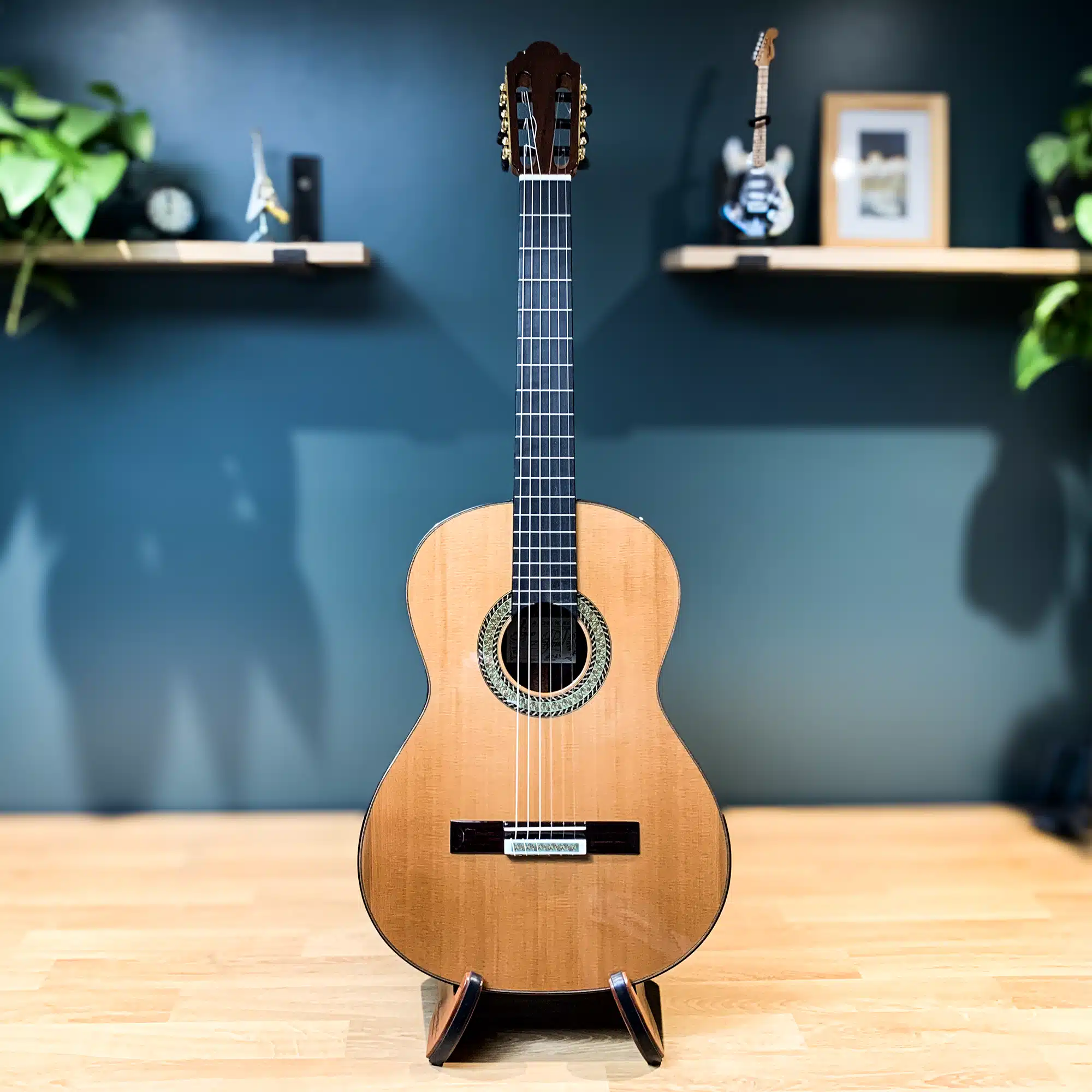
There are a number of factors that determine the price of a guitar. These include the materials it is built from, the workshop in which it is made (and by whom), as well as how much of the guitar is produced by hand.
One of the biggest factors determining the quality of a classical guitar is how much of it is made with solid wood. At the lower end of the market, guitars often have ‘laminate’ components (a low-cost piece of wood with a better quality piece of wood laminated on top). Laminate is cheaper to use in production than solid wood. Guitars made with solid wood produce a better sound and you will therefore find you tend to pay more for these instruments than those made with laminate.
The quality of the tuners (or ‘tuning pegs’) can also add significant cost when you enter the concert guitar range, as these can be anywhere from around £200 for a decent set, up to around £1,000 or beyond for high end or custom engraved tuners.
Craftsmanship and country of origin also affect the price of a classical guitar. A good luthier knows how to get the best out of the materials at their disposal. Luthiers that are well established and have an excellent reputation tend to be able to charge more for their instruments, however you can still find some real gems from lesser revered luthiers, so price isn’t everything here.
When it comes to concert guitars, we’ve developed keen eyes and ears for great craftsmanship. We work with a number of the UK’s finest guitar makers, with only the very best making it into our studio.
Now that you have a little background information, read on to learn more about approximately how much you should spend on a classical guitar.
Beginners (up to Grade 2)
Choosing the right guitar to start with is absolutely critical. The market is saturated with incredibly cheap instruments and if you don’t yet know what to look for, it can be tempting to buy one of the cheapest just to get started – big mistake!
The cheapest classical guitars on the market may look like real instruments, but a lot of them perform more like toys than musical instruments.
They are seldom made from ‘tonewood’, that is to say, specific types of wood that resonate to produce a good sound. Structural integrity is questionable at best and the sound is usually dull and lifeless.
Perhaps the worst part about the very cheapest classical guitars is that they are difficult and cumbersome to actually play. If you buy one of these guitars with the intention of learning to play classical guitar, you will struggle and it may even turn you off.
You may be able to tell from my scathing opinion of these imitation instruments that I’m not a fan. As a guitar teacher, I see way too many new beginners bring these things to lessons and attempt to make progress using them. They do nothing to excite the senses and offer a very poor first experience of the instrument for any new beginner.
So what should you look for in a beginner guitar that’s suitable for your first interaction with the instrument? Also, how much should you spend on a beginner classical guitar?
In terms of criteria, one of the most important things you should look for is a guitar with a ‘solid top’. This means the guitar has a solid piece of tonewood on the front where the soundhole is. The top is the part of the guitar that arguably makes the biggest difference to the sound (compared to the back and sides).
I’d also opt for a reputable manufacturer/luthier who also produces higher end guitars. Their skills and knowledge of how to make a decent classical guitar will at least be somewhat present in their budget range of guitars.
The above criteria should be your minimum requirement. Next, we need to look at your aspirations. Are you just wanting to try out learning to play the guitar, or are you determined to reach at least a certain level? Are you dedicated to making significant progress or is it just for a bit of light relief?
If you’ve decided to start playing classical guitar for a bit of fun and just want to see how you get on, I’d recommend finding an instrument that meets the above criteria and that fits within your budget.
Depending on what you’re looking to achieve in the medium term, I would suggest a budget of between around £200-£500.
Intermediate (Grade 2-5)
When you reach around grade 2, you may wish to upgrade to something which will allow you more room to grow musically. By this stage, you will have a sense of how your technique affects the sound of the guitar. You should have begun experimenting with more extreme dynamics (compared to the early stages of learning) and will have begun experimenting with natural, ponticello and tasto positions (to create different tones/musical characters).
In order to continue improving your classical guitar playing, you need an instrument with a wider tonal palette that can also cope with being pushed louder as you expand your dynamic range.
How much should you spend on a classical guitar if you’re an intermediate level guitarist?
Again, we should consider your aspirations for this stage of learning before getting into recommended budget. Having picked up the basics, are you keen to learn more and push yourself to new heights? Or are you content with playing new pieces at the same level, and not concerned about pushing your musical boundaries much further?
At this stage, dynamics and tonal contrast begin to play a bigger part in your musical development.
A guitar that has a good dynamic range is essential. In other words, your guitar should have the capacity to be played much louder than your current instrument before buzzing.
It is also beneficial to play a guitar that has a wide tonal palette. At Grades 2-5 you will be experimenting more with tasto and ponticello positions, making multiple tonal shifts within a piece of music. A guitar that has good tonal contrast will highlight these changes better than a guitar that does not have much difference between tasto/ponticello.
If you’re upgrading to an intermediate guitar, the minimum I would recommend spending is around £400. If you want a bit more room to grow and you can afford to push to boat out, I’d recommend spending as much as £1,000.
Advanced (Grade 6-8)
When you reach grade 6 standard, things are starting to get serious. You’ve caught the classical guitar playing bug and are usually hell-bent on at least getting to grade 8. At this point, we can put aspirations aside. We all know that you’re going to carry on pushing yourself to develop into a better musician, at least until you’ve reached grade 8. So how much should you spend on a classical guitar that meets your needs?
Well, from grade 6 onwards, I expect my guitar students to begin to express themselves a lot more musically. It’s one of my biggest expectations at this level. It’s no longer enough to just play ‘ponticello’ and observe the ‘mezzo forte’ mark in the music. You need to convince whoever is listening to you that playing ponticello and mezzo forte at that moment in time is the only way to play because something deep in your soul makes you do it.
At this level, it’s all about character and expressing yourself fully. If you’re going to do that, it’s likely that your minimum requirement will be a guitar that is made of solid woods and does not use inexpensive wood laminate (laminate being typically used for budget and mid-range guitars).
A classical guitar made with solid wood tends to have a more authentic and rich sound compared to guitars that use laminate.
Laminate can sometimes produce a ‘thwacky’ sound that lacks true depth when compared side by side to an all solid wood guitar. Solid wood guitars somehow have more substance to the sound, meaning the characters you portray through your playing come across more authentically. It’s kind of like watching a theatre production live as opposed to watching the same thing on tv. A live performance is as real as it gets. Even if we watch something on the latest spec television screen with the very best cinematic sound, it’s still just a moving picture and part of us knows it.
There are numerous types of woods used in classical guitars at this level. Far too many to get into any real depth in this article, but I may cover the topic at a later date.
That being said, some of your main options are generally spruce or cedar for the top and most likely Indian Rosewood for the back and sides (although luthiers are slowly starting to move towards more sustainable options). The biggest decision you’re likely to make is choosing between a spruce top or cedar top, as they tend to have different tonal characteristics.
So how much do you need to spend on a classical guitar that will see you safely through the grade 6-8 stage?
If you’re somewhat limited by budget and want the most affordable guitar that would see you safely to grade 8, I’d strongly recommend the Antonio Picado Model 53. It comes in a spruce or cedar version so you fine tune your selection to your tonal preference. This is a superb instrument that does everything required at this level to a high standard. It has the essential capacity to balance different voices and has a musical and lyrical tone. An excellent all round choice that doesn’t break the bank.
If you are able to stretch a little further then you can’t go wrong with one of the Model 53’s siblings; the Model 54 comes with a reinforced neck and some nice design tweaks, whilst the Model 60 opens up a whole new world of dynamic and expressive capabilities.
If you’re looking for a warmer tone that does not cost the earth, I highly recommend the Saers A50. The A50 is a cedar topped lattice braced guitar, the cedar giving incredible boldness and warmth to the tone whilst the lattice system boosts projection.
The Saers A70 is a higher end version of the A50, bringing higher quality woods for extended tonal and dynamic range plus a French polished top for supreme tone and a luxury feel. The A70 also comes in spruce and cedar variants, so you have more options with this model than the A50.
The Vicente Carrillo Estudio sits somewhere in the middle. It’s a traditional fan braced instrument that feels as though it has been designed for ease of use and a warm, bold tone. The neck is especially playable and will suit acoustic guitarists who are dipping their toe into the classical guitar world.
For those shopping at the higher end with a healthy budget of around £2,000, I can highly recommend the Wolfgang Jellinghaus ‘Conservatory’ guitar. A lattice braced guitar with a supremely bold and enjoyable tone. The huge dynamic range eats up the most demanding of repertoire and is a guitar that is perfectly suited to both practice room and stage (should you need it).
All of the above are excellent guitars, perfectly suited to a grade 6-8 classical guitarist.
Concert Guitars
This would not be complete unless we talk about concert guitars.
Simply put, concert guitars are the very best classical guitars money can buy. If you’re in any way serious about your guitar playing, one of these fine instruments should be your ultimate goal. Of course, how realistic this is depends largely on your budget.
Fortunately there are now some great concert guitars out there that are relatively affordable. We’ve partnered with UK luthier Steve Toon to bring an affordable concert guitar to the market that doesn’t compromise on tonal quality.
If you’re considering a concert guitar we strongly advise you check out Steve’s Inizio model. Whilst a typical concert guitar will cost in the region of £4,000, the Inizio model comes in under £2,500 including a hard case. An excellent option for those looking for an all English concert classical guitar.
Equally impressive is the Antonio Picado Model 62, a highly expressive and full sounding concert guitar made exclusively in Spain. Antonio Picado are renowned for offering high quality, high value guitars that easily complete with much more expensive instruments. The Model 62 is one such guitar that warrants a special mention here. First quality woods with highly desirable Madagascar Rosewood back/sides, this guitar simply sings and is a real joy to behold.
Concert guitars are not just for professionals. Any serious guitarist who spends any length of time playing their guitar should one day enjoy the great pleasure of playing and owning one of these fine instruments. They make a huge difference to your enjoyment of music and can even spur you on to become a better musician by unlocking tonal/dynamic possibilities that were previously not available.
Conclusion
Buying the right classical guitar will have a huge effect on how well you develop and how much you enjoy playing. Choose the right instrument and you’ll set yourself up for years of enjoyment.
All of the guitars mentioned in this article are available from the CGA guitar shop. If you found this article useful and would like to support a small business like ours, we’d really appreciate it if you bought your next guitar from us. If you want to know why it’s a good idea to buy from us versus one of the big retailers (yes, there really are some good reasons that benefit you directly), then please check out our post: Why Buy From a Classical Guitar Shop
I hope you’ve found this post to be interesting and informative. If you have any feedback or would like any further advice, please leave a comment in the section below.


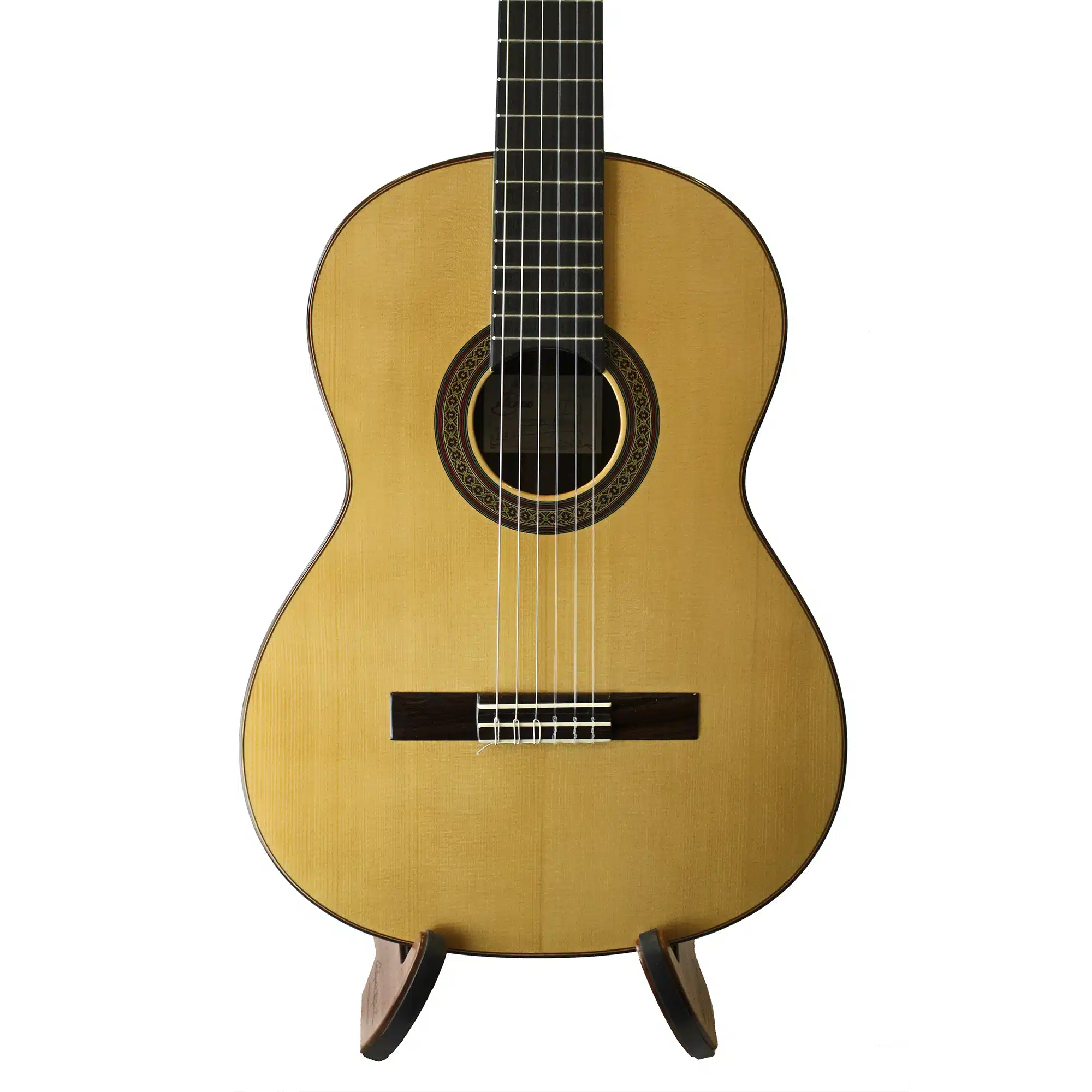
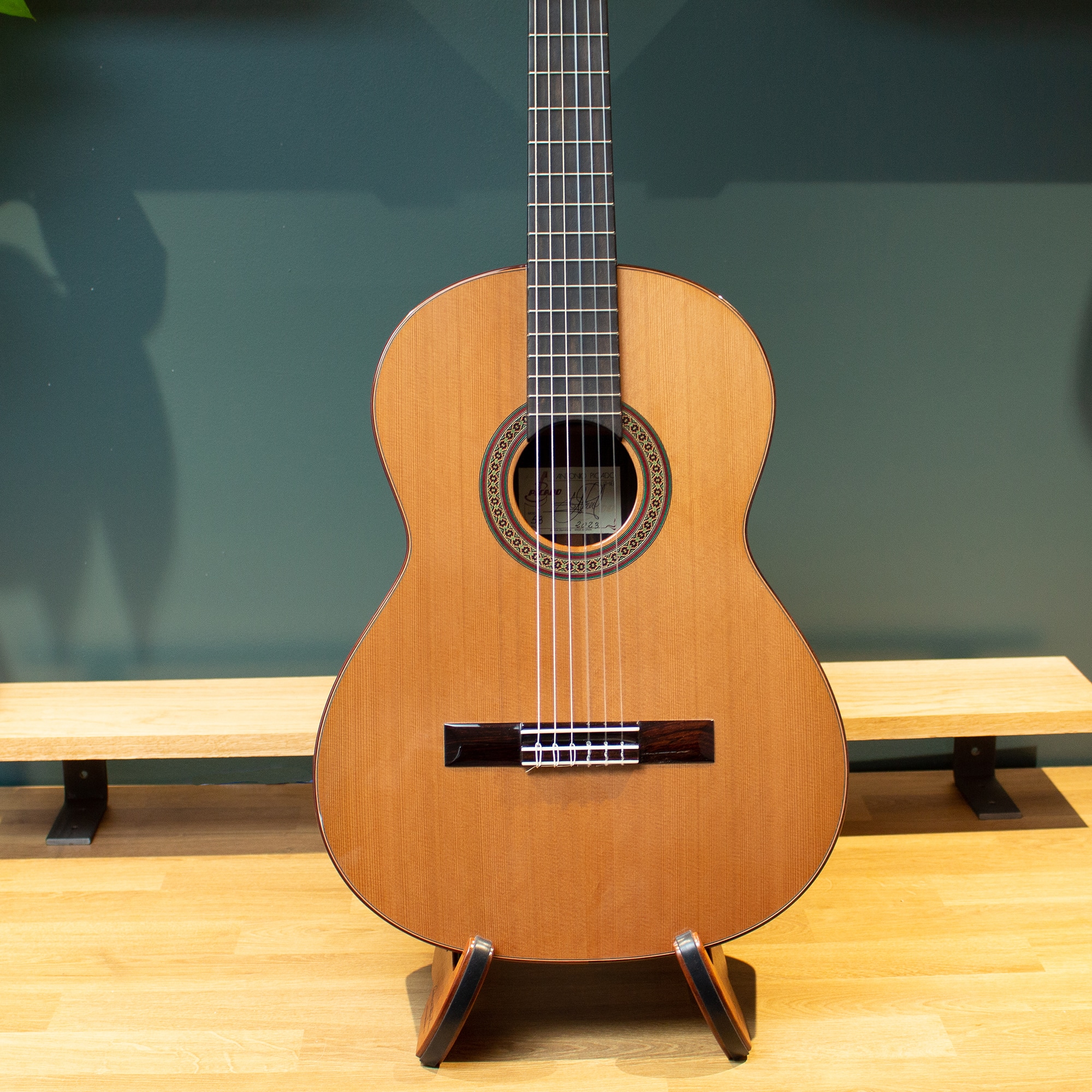



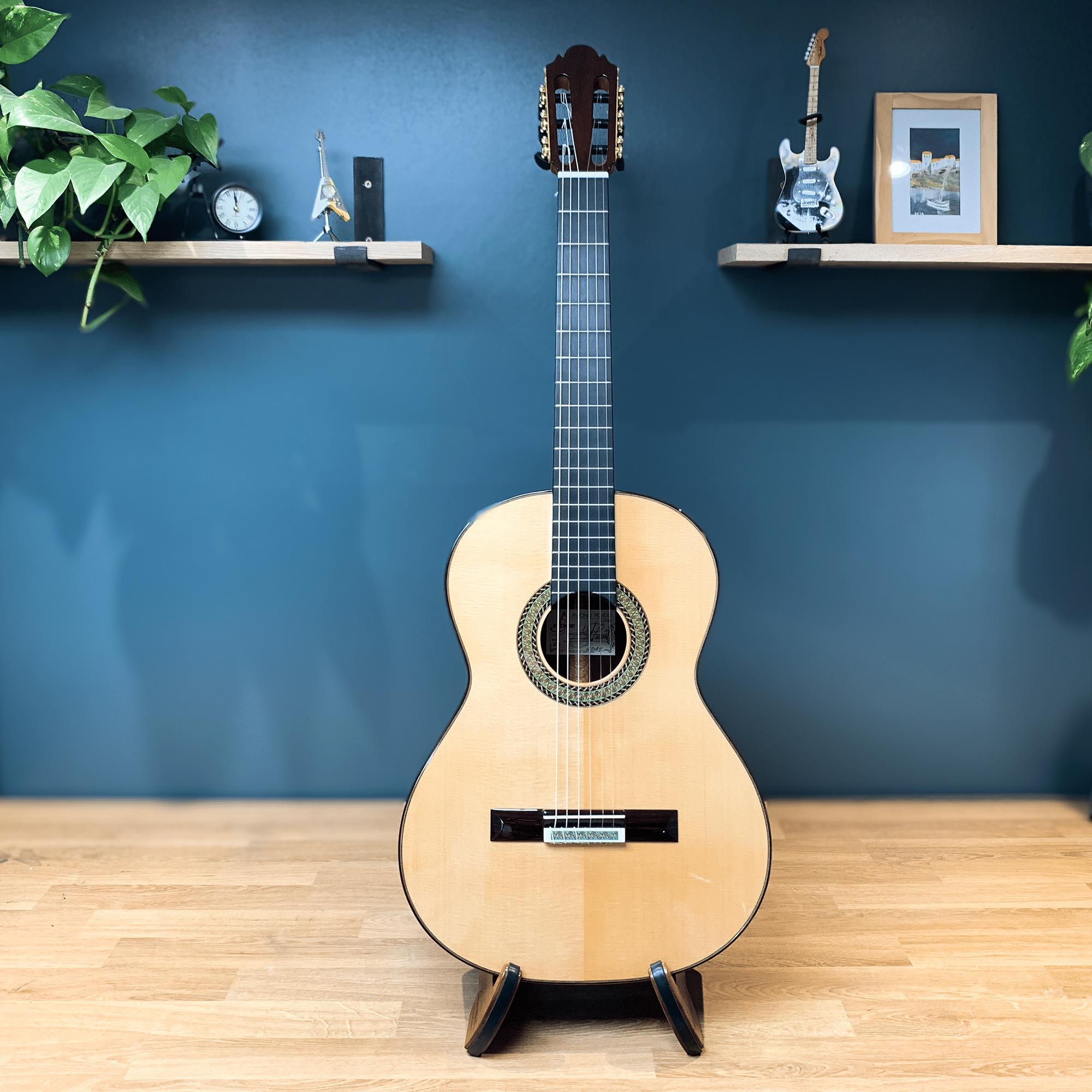


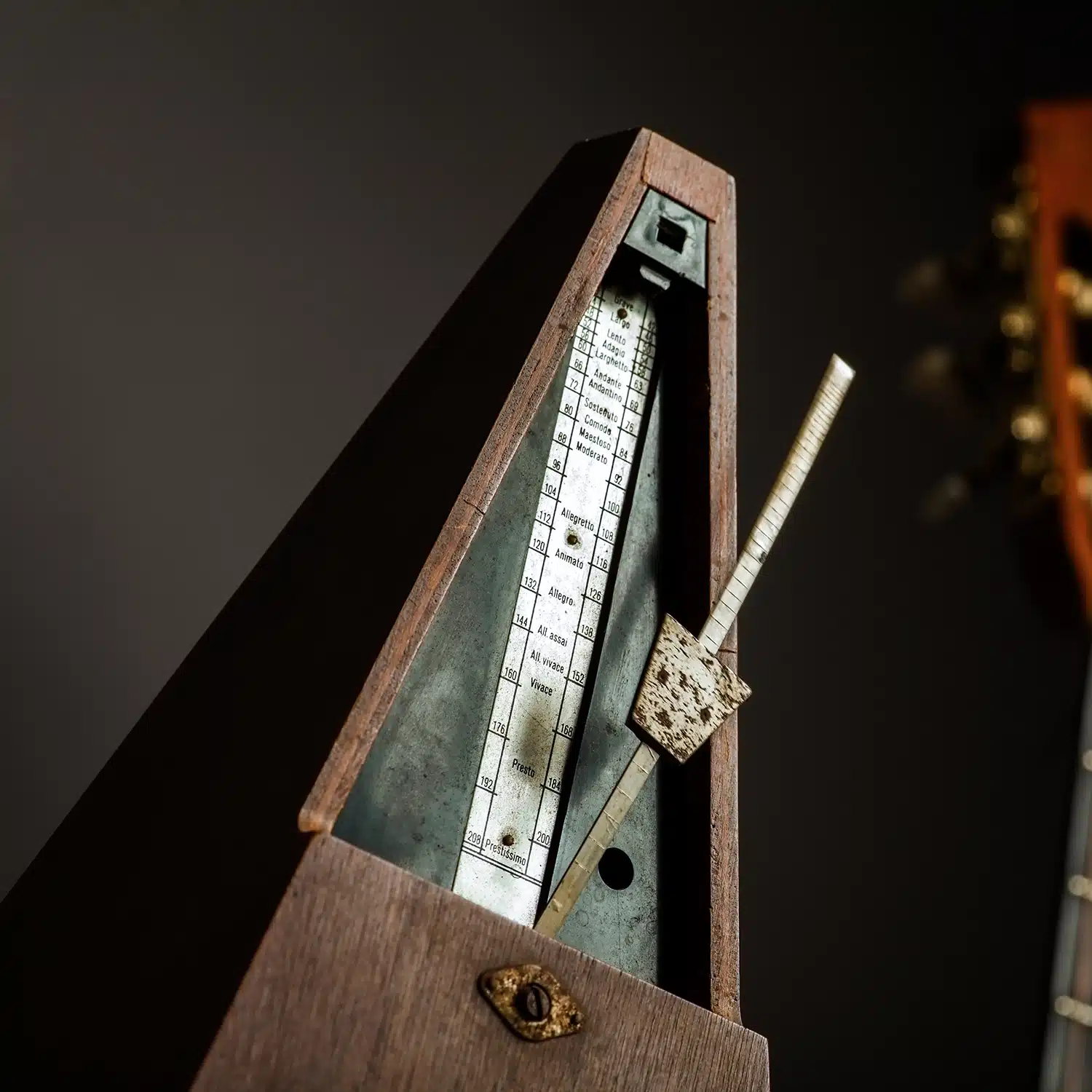








Great article Ed. I found it REALLY useful and written in a style that was informative and interesting. I’ll save it for future reference.
Thanks Steve, I’m glad you found it useful. If I can be of any further assistance in helping you decide on a new guitar please do get in touch.
All the best,
Ed
Thanks useful article- I wonder do you also sell second hand guitars ? I’m looking for a grade 6-8 bracket type of instrument.
Thanks
Hi Hannah,
Thanks for your comment on this post, I’m glad you found it useful. We do occasionally sell second hand guitars, but we are very particular about what we stock as our studio is only small. At the time of writing, the only secondhand guitar we have in stock currently is a José Ramirez SPR from 2011. It’s been well looked after and sounds beautiful! This is a guitar which is certainly capable of excelling with Grade 8 repertoire.